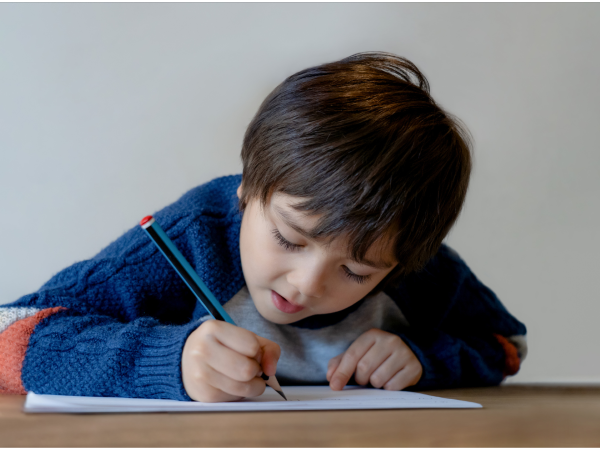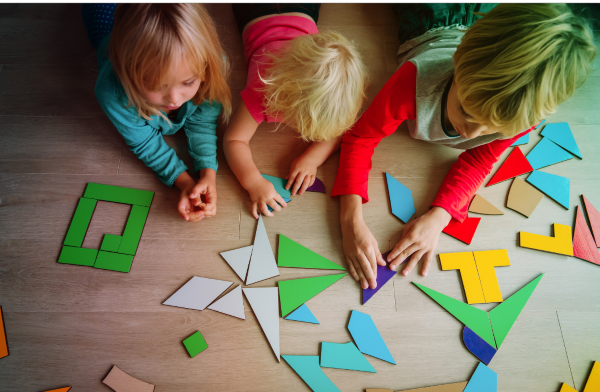Confidence Building Activities for Kids That Turn Doubt Into Bravery
Picture this, your 8-year-old stands frozen at the edge of the playground, watching other kids climb the monkey bars. You can see the longing in their eyes, but also the fear. “I can’t do it,” they whisper, and your heart breaks a little.
If this sounds familiar, you’re not alone. Many children struggle with confidence, and as parents and teachers, we’re always looking for ways to help them believe in themselves. Confidence building activities for kids play a crucial role in supporting their overall well being and healthy child development.
But here’s the thing, building confidence isn’t just about cheerleading from the sidelines. It’s about giving kids real opportunities to discover their own capabilities, make mistakes, learn from them, and try again. And one of the most powerful tools? Activities that let them practice being brave in small, manageable ways.
Think about a lemonade stand, for example. It’s not just about selling drinks, it’s a confidence-building laboratory where kids practice everything from problem solving skills to social skills, all while having fun. These activities are highly effective in helping children develop essential life skills and boost children's confidence. Programs like Lemonade Day provide free resources to help families create these learning experiences, turning a simple business venture into a powerful confidence booster.
In this guide, we’ll explore 15 proven confidence building activities for kids that you can start using today. These aren’t just busy work - they’re science-based exercises designed to help children identify their strengths, build self assurance, and develop the essential skills they need to thrive. By helping children build confidence, you are also supporting their long-term well being and healthy child development.
Key Takeaways:
- Confidence isn’t something kids are born with, it’s built through everyday experiences, like running a lemonade stand or tackling new challenges.
- Simple, hands-on activities help children turn “I can’t” into “I’ll try” by practicing bravery in safe, manageable ways.
- Programs like Lemonade Day offer real-world opportunities that teach life skills while boosting confidence and self-esteem.
- Encouragement is important, but giving kids opportunities to solve problems, make decisions, and learn from mistakes is what truly builds lasting confidence.
Understanding Confidence Building in Children
Before we dive into activities, let’s get clear on what we’re actually building. For kids aged 5-12, confidence means believing in their abilities to face challenges, try new things, and bounce back from setbacks. It’s that “I can do it!” feeling that shows up when they volunteer for show-and-tell or decide to join a new activity.

Confidence is different from self esteem, though they work together. Both confidence and self esteem are crucial for a child's self image and overall development, as they shape how children view themselves and interact with the world. While self esteem is about overall self-worth (“I’m a good person”), confidence focuses on believing you can handle specific situations (“I can learn to ride this bike”). Nurturing a child's self esteem is essential for building a healthy self image, which supports emotional well-being and resilience.
Signs Your Child Might Need a Confidence Boost
Watch for these red flags that might indicate low self esteem or confidence issues:
- Withdrawing from social activities or new experiences
- Frequent negative self talk like “I’m bad at everything”
- Fear of making mistakes or trying new things
- Giving up quickly when something gets challenging
- Avoiding situations where they might be evaluated
Self esteem issues can often be identified by observing a child's thoughts and behaviors, especially when negative self-perceptions or pessimistic thinking patterns are present.
Why Confidence Matters for Development
The research is clear, children’s confidence impacts three major areas of their lives. Kids with higher self esteem and strong confidence show better academic performance, form healthier social relationships, and enjoy better mental health overall. Building self esteem leads to positive outcomes in all areas of child development, helping children achieve greater self esteem, resilience, and a more positive outlook.
Studies show that social-emotional learning programs can boost academic achievement by up to 11 percentile points. When kids feel confident, they’re more willing to participate in class, take healthy risks, and see mistakes as learning opportunities rather than personal failures. The crucial role of adults, such as caregivers and educators, is to support children in building self esteem and guide them toward greater self esteem through encouragement and structured activities.
Creative Expression Activities
Creative activities give kids a safe space to explore their identity and express their positive qualities without the pressure of being “right” or “wrong.” The following activities are esteem activities and self esteem activities designed to help kids express themselves and build confidence.
Self-Portrait with Positive Traits
Have your child draw a picture of themselves, then surround it with words describing their positive traits. This activity helps children identify their strengths while creating a visual reminder they can return to when self doubt creeps in. By focusing on their positive qualities, children begin to develop a healthy self image, which supports their self-esteem and emotional well-being.
How to do it: Give them magazines, colored pencils, or markers. As they work, ask questions like “What makes you a good friend?” or “What are you really good at?” Write these words around their portrait in colorful letters.
Vision Board Creation
Vision boards help kids imagine their future goals and build confidence by visualizing success. Encouraging children to visualize positive outcomes can boost their motivation and confidence as they work toward their goals. Younger children can focus on short-term goals like “learning to swim,” while older kids might think about longer-term dreams.
Materials needed: Poster board, magazines, glue sticks, markers, personal photos
Confidence Superhero Role-Play
This is where things get really fun. Have your child create a “confidence superhero” character, maybe “Captain Courage” or “Bravery Girl” - complete with costume and special powers.
Then act out scenarios where their superhero helps other kids who are feeling scared or uncertain. This activity helps foster confidence by allowing children to act out courageous scenarios, encouraging them to develop self-assurance and independence. This teaches kids that confidence isn’t about never being afraid; it’s about being brave even when you are scared.
Personal Strengths Collage
Create a collage showcasing your child’s achievements, talents, and kind actions. Include photos of completed projects, certificates, thank-you notes from friends - anything that demonstrates their capabilities and positive impact on others. Displaying these accomplishments serves as positive reinforcement, encouraging continued effort and building your child’s confidence.
Challenge-Overcoming Stories
Encourage kids to create stories (written, drawn, or told aloud) about characters who face difficulties and overcome them. This helps children process their own setbacks and reframe failures as stepping stones for personal growth. By focusing on how characters persist and learn from challenges, this activity supports the development of a growth mindset, teaching children that abilities can improve with effort and resilience.
Journaling and Writing Exercises
Writing activities are powerful tools for developing emotional intelligence and positive self talk. Journaling and writing exercises are commonly used as counseling activities to support confidence building in children. Even younger children can participate by dictating their thoughts to a parent or teacher.
Daily Gratitude Journals
Start each day or end each evening by writing down three good things that happened. This simple practice shifts focus toward positive experiences and builds awareness of daily successes, no matter how small.
Letters to Future Self
Have students write encouraging letters to themselves to open in six months or a year. They can include advice, goals, and reminders of their current strengths. This activity helps kids envision ongoing growth and development.

Success Story Documentation
Each week, help your child document one thing they accomplished or learned. Maybe they figured out a difficult math problem, helped a friend, or tried a new food. These “success stories” create tangible evidence of progress and capability.
Positive Affirmation Creation
Work together to create positive statements your child can repeat daily. Using a positive statement to replace negative self-talk is important, as it helps boost confidence and encourages a growth mindset. Effective affirmations are specific and believable: “I am learning new things every day” or “I can ask for help when I need it” work better than generic statements.
Challenge Overcome Narratives
When your child faces a setback, help them write about it afterward. Through this writing exercise, students find and reflect on their own negative self-talk, which allows them to recognize unhelpful thoughts. Focus on what they learned, what they might do differently next time, and how they showed resilience. This builds coping skills and helps them see challenges as growth opportunities.
Social Confidence Building Games
Social skills and student confidence go hand in hand. These activities help kids practice interacting with others while building self assurance in group settings. Group members play a key role by sharing positive feedback and supporting each other during these activities.
Compliment Circles
Sit in a circle and have each person share something positive about the person next to them. This activity not only boosts the recipient’s confidence but also teaches kids to notice and verbalize positive traits in others.
Team Building Treasure Hunts
Create hunts that require cooperation and communication. In these activities, students work collaboratively to solve clues and achieve shared goals, promoting teamwork and positive relationships. Teams must work together to solve clues, which naturally builds leadership skills and shows kids they can contribute meaningfully to group efforts.
Social Scenario Role-Playing
Practice handling difficult situations through role-play. Act out scenarios like joining a group at recess, handling disagreements, or standing up for someone being teased. This gives kids a chance to practice responses before real situations arise.
Show-and-Tell Presentations
Regular opportunities for public speaking help kids build comfort with expressing themselves in front of others. Start small—maybe sharing about a favorite book or hobby—and gradually work up to more complex presentations.
Peer Recognition Certificates
Create a system where kids can nominate classmates or siblings for positive actions. When children receive recognition from peers, it reinforces their sense of belonging and value within their community.
Goal Setting and Achievement Activities
Learning to set and achieve goals builds confidence through concrete evidence of capability. These activities teach kids that persistence pays off. Use these goal setting activities to track progress and celebrate achievements throughout the school year.
SMART Goal Worksheets
Help kids break down big dreams into SMART goals - Specific, Measurable, Achievable, Relevant, and Time-bound goals. A goal like “get better at basketball” becomes “practice shooting 20 free throws every day for two weeks.”
Example worksheet sections:
- What do I want to accomplish?
- How will I know I’ve succeeded?
- What steps do I need to take?
- When will I complete this?
Progress Tracking Charts
Visual progress tracking helps kids see improvement over time. Whether it’s reading minutes, math facts mastered, or acts of kindness completed, charts provide motivating evidence of growth.
Skill Development Challenges
Choose age-appropriate skills for kids to master like tying shoes, riding a bike without training wheels, or learning to cook scrambled eggs. The key is picking challenges that stretch them without being overwhelming. As children master these new skills, they begin to feel competent, which boosts their confidence and encourages them to take on more challenges.
Achievement Jars
Throughout the month, have kids write down completed tasks, kind actions, or small victories on slips of paper to put in a special jar. At month’s end, read them all together to celebrate progress.
Personal Record Keeping
Help kids track their own improvements in activities they enjoy such as their fastest mile time, books read, or soccer goals scored. This teaches them to measure progress against their own past performance rather than constantly comparing themselves to others.
Responsibility and Independence Builders
Nothing builds confidence quite like knowing you can handle real responsibilities. These activities give kids meaningful ways to contribute while developing self-reliance.
Age-Appropriate Household Chores
Create a responsibility chart with tasks suited to your child’s age and abilities. Younger children might sort silverware or water plants, while older kids can handle laundry folding or meal prep assistance.
The key is consistency, when kids know their family depends on them for specific tasks, it builds their sense of competence and contribution.
Classroom Helper Roles
Rotate leadership opportunities so every child gets a chance to be the line leader, materials distributor, or peer tutor. These roles help students feel valued and develop leadership skills.

Pet Care Responsibilities
Caring for a pet teaches empathy, commitment, and the importance of dependability. Even something as simple as remembering to feed the class fish helps kids understand that others count on them.
Personal Organization Projects
Help kids take ownership of their spaces by organizing their backpack, tidying their room, or arranging their art supplies. When children feel in control of their environment, it carries over into other areas of confidence.
Community Service Opportunities
Age-appropriate volunteer activities help kids see they can make a positive impact beyond their immediate circle. This might include picking up litter at a local park, collecting supplies for animal shelters, creating cards for nursing home residents, or performing random acts of kindness such as holding doors or writing encouraging notes to others.
And here’s where the lemonade stand comes in beautifully. It’s community service, business education, and confidence building all rolled into one. Programs like Lemonade Day provide free tools and step-by-step guides that make it easy for families to create these meaningful learning experiences.
Physical Confidence Activities
Physical activities build confidence through body awareness, perseverance, and the satisfaction of improving skills through practice. Starting these activities at a young age helps children develop confidence, resilience, and lifelong skills that support their overall well-being. Older children can benefit from more advanced physical challenges, which further enhance their confidence and mental well-being.
Individual Sports Skills Practice
Activities like swimming, martial arts, or gymnastics show kids that abilities grow with effort. The focus should be on personal improvement rather than competition with others.
Team Sports with Effort Focus
When participating in team sports, emphasize trying your best, supporting teammates, and learning from mistakes rather than winning at all costs. This approach builds both confidence and good sportsmanship.
Outdoor Adventure Activities
Hiking, nature exploration, or camping help kids develop resilience and comfort with facing the unknown. Start with manageable adventures and gradually work up to more challenging experiences.
Dance and Movement Exercises
Dance and creative movement promote body positivity and self-expression. Kids learn to enjoy moving their bodies without judgment or comparison.
Skill-Level Obstacle Courses
Create obstacle courses that can be adjusted for different abilities. This gives every child opportunities to experience challenge, overcome difficulties, and celebrate improvements.
Mindfulness and Emotional Regulation
Teaching kids to manage their emotions and stay calm under pressure is crucial for building lasting confidence. Mindfulness and emotional regulation activities are important forms of self care for children, helping them support their emotional well-being and develop healthy coping skills.
Deep Breathing Exercises
Teach simple breathing techniques kids can use when they feel anxious or overwhelmed. Try “bubble breathing” which is inhaling slowly as if smelling a flower, then exhaling gently as if blowing bubbles.
Emotion Identification Activities
Use feeling wheels, emotion cards, or facial expression charts to help children build emotional vocabulary. When kids can name their feelings, they’re better equipped to manage them.
Positive Visualization Techniques
Before big events like presentations or performances, help kids imagine themselves succeeding. This mental rehearsal reduces anxiety and builds confidence for real situations.
Meditation and Reflection Time
Even brief periods of quiet reflection help kids process emotions and experiences. This might be as simple as a few minutes of silent thinking time each day.
Stress Management Strategies
Teach practical techniques like counting to ten, taking a short walk, or asking for a break when feeling overwhelmed. These tools help kids feel more in control when facing challenges.
Problem-Solving Confidence Exercises
When kids learn they can figure things out, their confidence soars. Problem-solving activities also help children overcome negative thinking by challenging unhelpful thought patterns and building resilience. These activities build resilience and adaptability.
Age-Appropriate Logic Puzzles
Brain teasers, riddles, and logic games teach kids to persevere through confusion and find solutions. Start with easier puzzles and gradually increase difficulty.

Real-Life Scenario Discussions
Talk through common childhood challenges like what to do when friends are fighting or how to handle forgetting homework. Brainstorming solutions together builds critical thinking and self-assurance.
Decision-Making Practice
Give kids age-appropriate choices and let them experience natural consequences. This might include choosing their outfit, deciding how to spend allowance money, or picking which activity to try.
Creative Problem-Solving Challenges
Provide everyday materials and challenge kids to build something or solve a problem creatively. These open-ended activities encourage flexible thinking and innovation.
Multiple Solution Games
Present problems that have several possible solutions and encourage kids to think of as many approaches as possible. This reinforces that there are many ways to overcome obstacles.
Supporting Confidence at Home and School
Building confidence isn’t a one-person job in it takes collaboration between families and schools to create consistent, supportive environments. Creating a supportive environment at home and school is essential for fostering confidence in children, as it helps them feel safe, encouraged, and ready to take on new challenges.
Parent-Teacher Collaboration
Regular communication between home and school ensures everyone is working toward the same goals. Share what confidence-building strategies are working and which areas need extra support.
Creating Safe Spaces for Mistakes
Transform errors into learning opportunities by responding to mistakes with curiosity rather than criticism. Ask “What can we learn from this?” instead of focusing on what went wrong.
Celebrating Effort Over Outcomes
Praise persistence, improvement, and good choices rather than just final results. This helps kids value the process of learning and builds intrinsic motivation.
Family Achievement Traditions
Create regular ways to honor individual accomplishments - maybe a special dinner for trying something new or a family “brag box” where everyone shares something they’re proud of.
Regular Check-Ins
Make time for daily conversations about challenges and successes. These check-ins help you spot early signs of confidence dips and address them before they become bigger issues.
Putting It All Together: The Lemonade Stand Approach
Here’s why programs like Lemonade Day are so powerful for confidence building - they weave together multiple skill areas in one engaging, real-world experience.
When kids run a lemonade stand, they’re practicing:
- Goal setting: Planning their business and setting sales targets
- Problem solving: Figuring out pricing, location, and customer service
- Social skills: Interacting with customers and working with family
- Responsibility: Managing money, supplies, and time
- Creative thinking: Designing signs, choosing lemonade recipes, marketing their stand
- Resilience: Handling slow sales days or unexpected challenges
Participating in a lemonade stand helps build self esteem by giving children opportunities to make decisions, overcome obstacles, and see the results of their efforts. This hands-on experience fosters both confidence and self esteem as kids realize their capabilities and develop a sense of accomplishment.
The beauty is that kids don’t even realize they’re building all these essential skills, they’re just having fun and feeling proud of what they’ve accomplished.
Lemonade Day provides free resources, lesson plans, and community support to make this experience accessible to every family. Celebrating achievements through activities like Lemonade Day contributes to positive self esteem, reinforcing a child’s belief in their abilities. It’s a perfect example of how confidence building activities for kids work best when they feel meaningful and connect to the real world.
Getting Started: Your Next Steps
Building confidence is a journey, not a destination. You don’t need to try every activity in this list. Instead, start with one or two that feel like a good fit for your child’s personality and interests. Encourage students and encourage children to participate in confidence building activities, such as group projects, creative arts, or sports, to help them discover their strengths and develop a positive mindset.
Remember, the goal isn’t perfection. It’s helping kids develop the self assurance to try new things, learn from mistakes, and believe in their ability to grow and improve.
Whether you start with a simple gratitude journal, organize a backyard obstacle course, or help your child make their first lemonade stand, you’re giving them something invaluable - the confidence to face whatever comes next.
And here’s the beautiful thing about confidence - once kids start building it in one area, it spreads to everything else they do. That child who was afraid of the monkey bars? With some practice and support, they might just surprise themselves with what they can accomplish.
The most important step is the first one. Pick an activity that excites you both, and start building that confidence today. Remember, fostering self acceptance is a crucial part of this journey, helping children embrace who they are as they grow.
Frequently Asked Questions
What are confidence building activities for kids?
Confidence building activities for kids are games, projects, and exercises designed to help children believe in themselves, try new things, and bounce back from challenges.
Why are confidence building activities important?
These activities give children real opportunities to succeed, learn from mistakes, and discover their strengths, all of which are crucial for healthy self-esteem and growth.
Can confidence building activities help shy or anxious kids?
Yes! Small, positive experiences like show-and-tell, team games, or running a lemonade stand help even the shyest kids practice bravery in safe, fun ways.
How can I support my child’s confidence at home?
Encourage effort, celebrate progress, and give your child chances to solve problems and make choices. Let them try new things and praise their persistence, not just results.
Are there free resources for confidence building activities?
Absolutely. Many programs, including Lemonade Day, offer free guides and printables to help families try new activities and track their child’s growth in confidence.
How often should I do confidence building activities with my child?
Consistency matters more than frequency. Try to include at least one or two confidence-building moments each week, whether it’s a fun project, a new responsibility, or a group activity.
back to blog
@LemonadeDayNational






